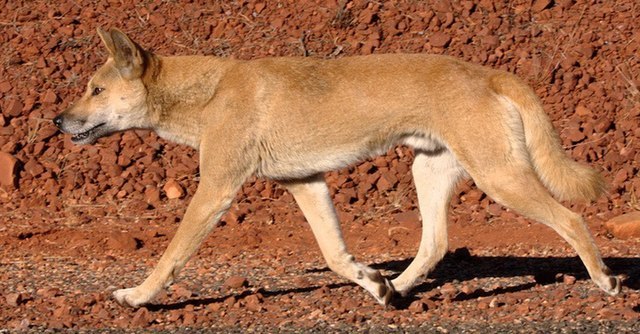I frequently post excerpts from serious articles that sound as if I wrote them as parodies. But here's a terrific section from a New York Times article
Australia's Changing View of the Dingo by James Gorman and Christine Kenneally that hits on about a half dozen or more iSteve golden oldie themes in a row. This stuff is just plain interesting. You have to work hard to convince yourself you aren't interested in the human equivalents of these topics. And that just makes you boring and dull-witted.
Dingoes are generally classified as a subspecies of wolf, Canis lupus dingo, although in the past they have been classified as a subspecies of dog and as a separate species.
As a long-time critic of both thinking of human racial groups as "subspecies" and of proclaiming that Race Does Not Exist because of the problems with the subspecies concept I'm always on the lookout for news of scientists being befuddled about how to classify other animals, especially ones as well-known to us as canines.
Linnaeus did a tremendous job of classifying plants and animals into useful, reasonable categories, but the categories are for our convenience. I've argued that what people are most interested in about other people are not their Linnaean classification, but who their relatives are. Thus, a racial group is an extended family that has more coherence and continuity than run of the mill extended families because it is inbred to some degree.
By way of analogy, think about a very expensive type of animal for whom we know the entire genealogy going back scores of generations: the thoroughbred racehorse. The color of the coat is of little interest to buyers and bettors. They don't need to classify bays and grays separately because they know the actual genealogy of every horse: e.g., Seabiscuit was the grandson of Man o' War while his archrival War Admiral was the son of Man o' War and therefore Seabiscuit's uncle.
Now, we don't know the genealogy of individual dingos, so we study how they look, how they behave, any archaeological record, and their DNA to figure out how to classify them for important purposes of our own, such as Australia's equivalent of the Endangered Species Act. But, scientists still wind up arguing over how to classify them because classifications are something we impose for our own purposes. The only thing that inevitably exists is genealogy: father, mother, child.
Physically, they resemble a generic, medium-size dog, about 40 pounds, usually tan-colored, with pricked ears and a bushy tail.
If you let dogs mate randomly, as in much of the Third World, that's typically about what you wind up with. The dingo is distinctive looking in some ways, but in general looks like the Indian pariah dog of the streets. A 2004 DNA study said dingos were more closely related to Chinese dogs, but both seem pretty close to the Default Dog.
The rest of this excerpt is equally interesting.
They do not have some of the physical signs of domestication found in many dog breeds, like barking as adults. They breed once a year, like wolves, and when undisturbed they have a stable pack structure topped by one male-female pair, the only ones in the pack that reproduce.
Bradley Smith, a research associate in public health at Flinders University in Adelaide who has studied dingoes, said by e-mail that experimental tests put dingoes closer to wolves in the kind of intelligence they display. “Both dingoes and wolves, being highly effective predators, are great at problem solving, working well in groups, and independent problem solving,” he said.
But they also understand humans in a way that wolves do not. They get it when a person points at something, while wolves are clueless or supremely uninterested. Dingoes are not as good as dogs, however, at following a human’s gaze.
Dingoes, Dr. Smith wrote, “seem to be a prime example of one of the first types of ‘dogs’. Not domestic dogs as we know them now, but some form of early dog that made it easier for the human-canid relationship to develop. You could almost say dingoes are frozen in time — as they have made a very good home in Australia and have been isolated for many thousands of years.”
Dingoes came to Australia 3,500 to 5,000 years ago, probably with Asian seafarers, and already at least partly domesticated. At the time, people had been on Australia for almost 50,000 years, without dogs. The dingo quickly became an essential part of Aboriginal life and stories.
Deborah Rose, a professor at Macquarie University in Sydney who has done research with Aboriginal peoples and is the author of “Dingo Makes Us Human,” said the dingoes were a deep part of Aboriginal life. “The dingoes had names, they had kinship classifications, which makes them so unlike all other animals in Australia,” she said. “They had a place at the campfire.” Or even closer. The phrase “three-dog night” has been attributed to indigenous Australians as a way of describing how cold it was. However, it does not seem that Aborigines bred dingoes selectively.
Wikipedia has a less well-written but even more extensive article on dingoes and all the controversies involving their racial purity that are a big deal in Australia for legal and other reasons.













